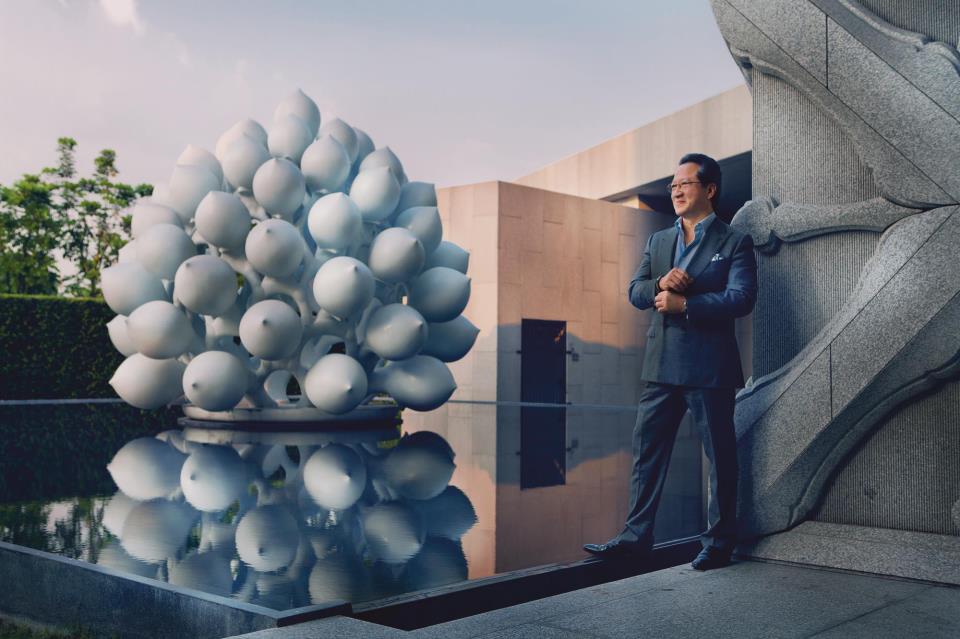Message from the founder

I’ve been observing and studying the development of art in our country, which has a very unique identity, for more than three decades. I discovered that Thai arts exhibit a deep dedication to Buddhism, both in theory and practice; it's as if these commitments are ingrained in our very being. We’ve absorbed the beauty of arts through the Buddhist works since we were young. Beginning with the image of Buddha, we pay respect every day to the artistic beauty of the architecture at the temples, which are the Cho Pha (gable apex) and Raga Leaves (toothlike ridges on the sloping edges of a gable), as well as the murals in the small temples around the country.
In fact, every civilized society in the world begins to engage with the arts based on similar principles; however, Thai artists possess a unique ability to integrate moral principles and expand the meaning of art, particularly in relation to traditional morals. Moreover, they can give a clear reflection of the beliefs that exist in Thai culture. MOCA intentionally preserved many contemporary paintings and sculptures from the past seven decades to the present day with the hope that we can share wisdom and entertainment with the audiences. Furthermore, we hope that we can leave a positive impression on people in other countries who decide to visit Thailand with the murals in our museum that combine all the Thainess that they’ve ever experienced.
Many of these fine works of art from many great artists who exhibited in this museum were motivated by Professor Silpa Bhirasri, the sculptor from Florence, Italy, who polished and pulled out the best potential of his disciples. He passed on his personal experiences and developed his disciples’ ideas, whose thoughts were based on Thai culture, and extended the thoughts to the contemporary arts that had been accepted by many civilized countries.

Through his teaching, he dedicated the effort and tenacity to his students as the art instructor and father, while he struggled with his own health and many obstacles that prevented him from working with some Thai people in government because he was an Italian working in Thailand during World War II. For all these reasons, we came together to honor Professor Silpa Bhirasri and regard him as the Father of Contemporary Art. We aim to serve as a catalyst for other museums to unite and establish a globally recognized center for art in Thailand.
As newcomers to the global art community, we are attempting to represent the various historical situations that have occurred in Thailand over time. Begin with the absolute monarchy period, which transitioned into the democracy period and continues to the present. This can be the worst period because of the lack of support from the Thai government for unstable political reasons. However, this period also provides an opportunity for artists to navigate the hectic world and establish their identities while pursuing their passions. Our museum will uphold the determination of Thai artists to preserve the identity of Thai art developed over the past 80 years.



